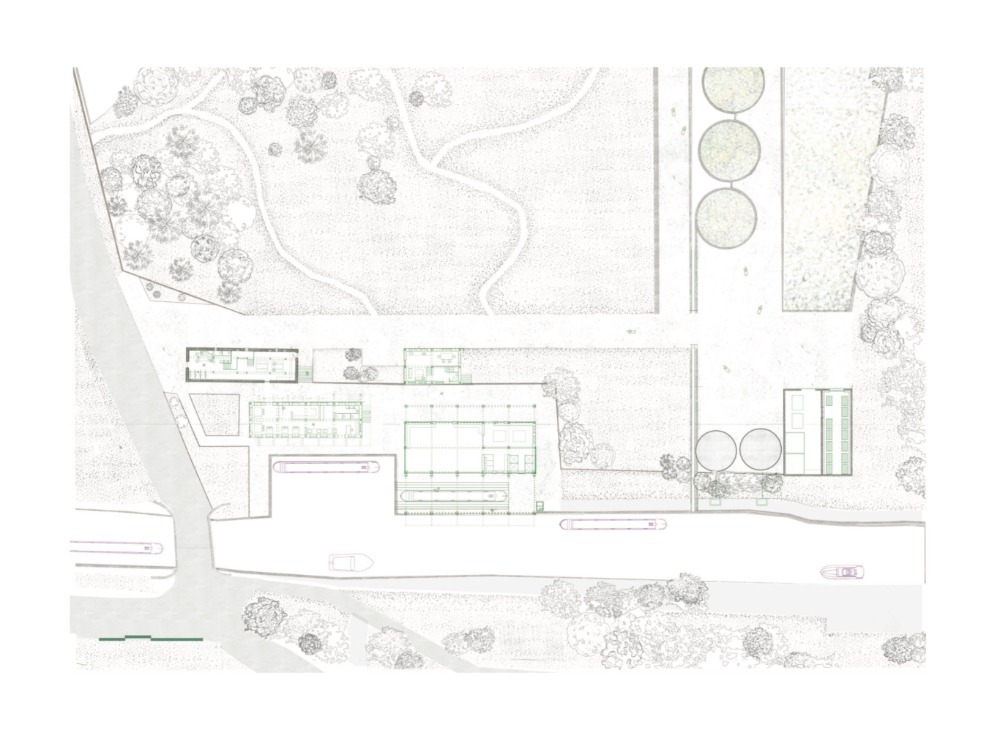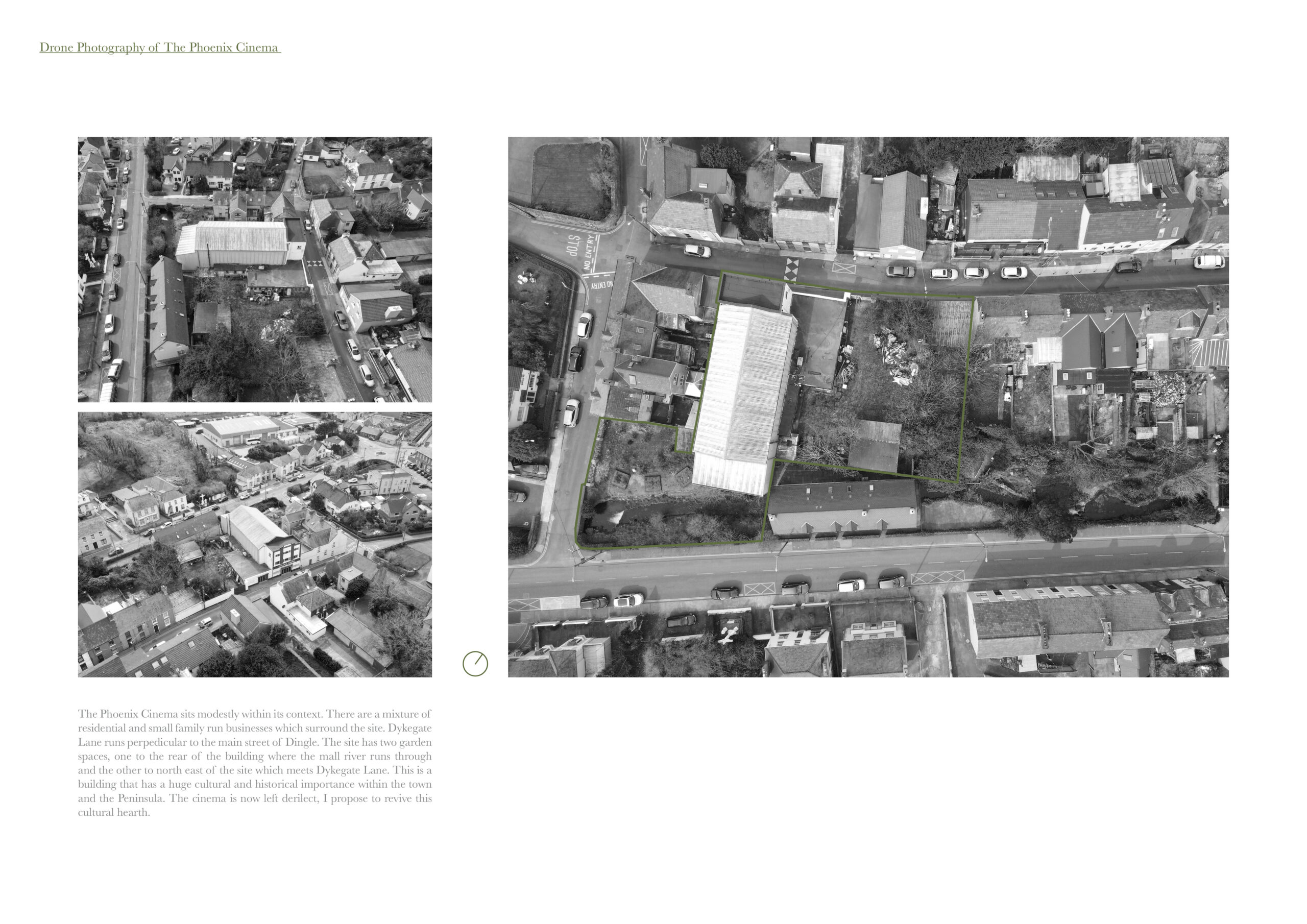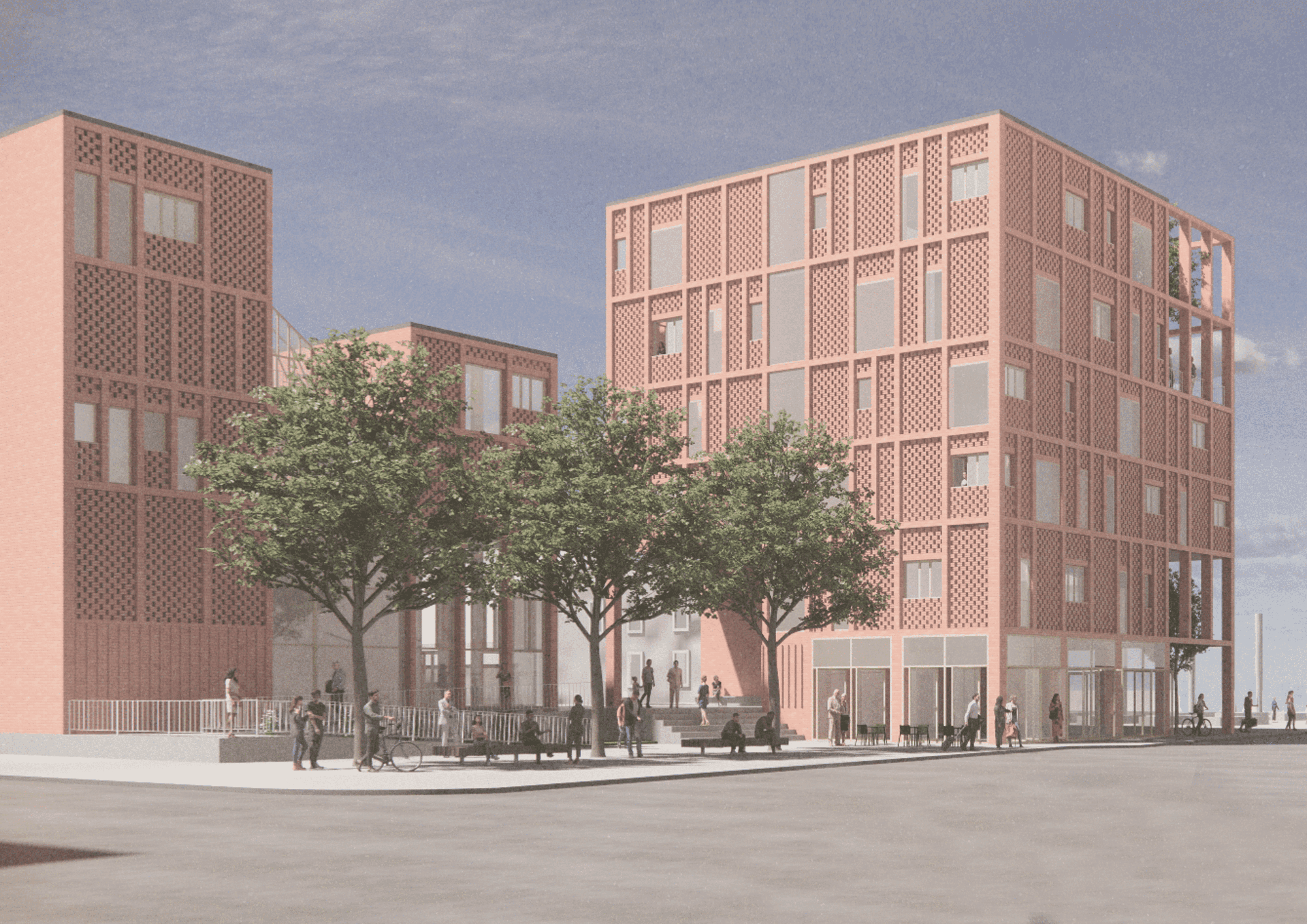My thesis is an investigation into the future of Irelands inland waterways. It looks specifically at the reuse of both materials and the sites of past industry that lie along the paths of our canals. In the past, Irelands canals served an industrial purpose connecting the towns linked by this network to Dublin. This thesis looks at the possibility of expanding the services and facilities available for people living on house boats to bring back the vibrancy and life that was once seen on the canals, back when workers were travelling the countryside by barge. By creating a new sustainable network supported by production on the banks of the waterways.
This thesis focuses on building with timber in an Irish environment as well as the reuse of industrial materials and warehouses along the canal banks to transform these places into vibrant functioning spaces once again. This would be made possible by using the waterways as streets of life and transport in the future.
The project was focused on the Grand canal, the canal was thought of as a redeveloped industrial corridor. However, this thesis can also be applied to any struggling post-industrial waterway whose banks show signs of dereliction.


